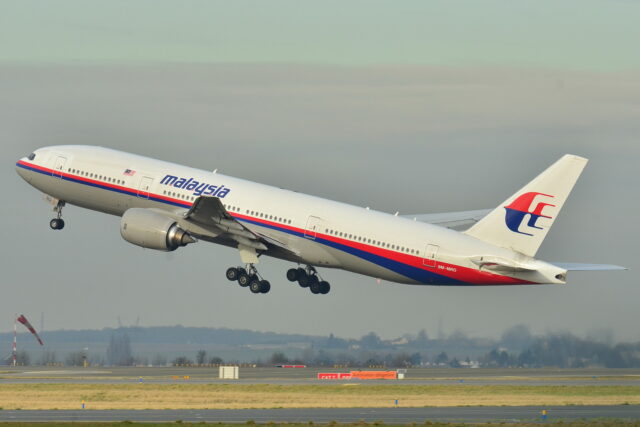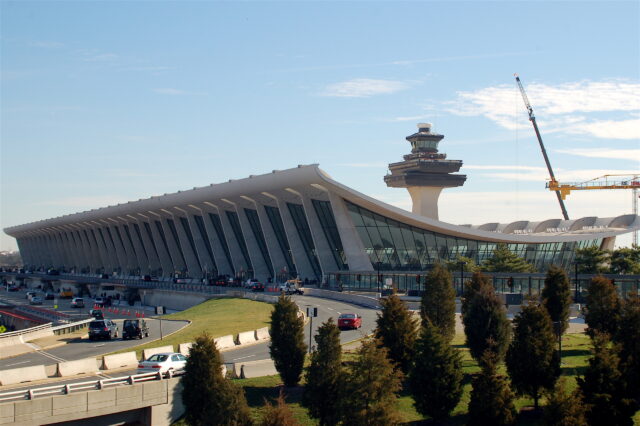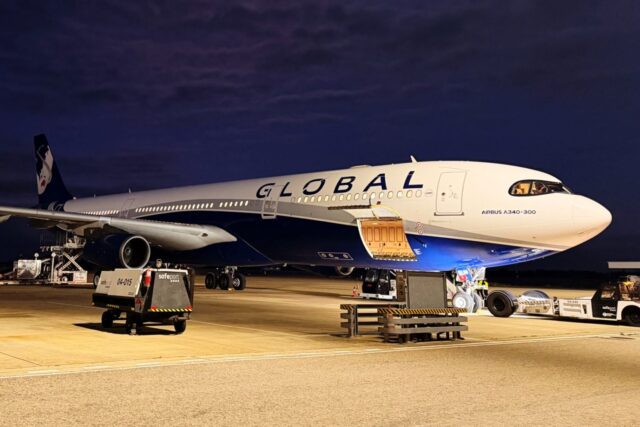Engine issues force Air New Zealand to lease a Wamos Air A330 for summer capacity

October 23, 2025

Some of Air New Zealand’s flights this summer will be flown with a Spanish aircraft. The kiwi carrier has been forced to wet-lease a Wamos Air Airbus A330-300 over the 2025/26 southern summer peak travel period.
Ongoing issues with the engines on its Boeing 787 Dreamliners, compounded by ongoing Pratt & Whitney GTF engine problems and some aircraft out of action for cabin refits, have left the airline short of metal for the peak season. This is the second time it has borrowed a Spanish aircraft to plug schedule gaps.
Wamos Air to fill Air New Zealand’s capacity gap
New Zealand’s national carrier is once again turning to Wamos Air, the Spanish ACMI (aircraft, crew, maintenance, and insurance) specialist airline, to provide additional lift capability over the peak summer months in the Southern Hemisphere.
The Airbus A330-300 being supplied by Wamos Air will be used on specific routes from Auckland between 30 October 2025 and 30 April 2026. The services will be operated by Wamos Air pilots, while the company’s cabin crew will offer an onboard service more akin to that of the New Zealand carrier.

Air New Zealand has had previous dealings with Wamos Air and its A330s. During the 2023/24 southern summer, the Madrid-based airline operated a daily service between Auckland (AKL) and Perth (PER) on behalf of the carrier.
“This is a short-term, proactive measure that will help us deliver our schedule during a busy travel period and ensure we get our customers to where they need to go,” said a statement on the Air New Zealand website.
Air New Zealand struggles with engine issues
Over the past year, Air New Zealand has been hit by a series of maintenance issues that have plagued its aircraft. Firstly, its 14-strong fleet of Boeing 787-9 Dreamliners has been heavily affected by a lack of spare parts for the Rolls-Royce Trent 1000 engine.
An issue causing premature wear and cracking in the turbine blades and compressor components within the engines was previously identified, yet replacement parts have proved to be hard to source.

As a result, the airline has been forced to ground several of its 787 aircraft in recent months. At the time of writing, two are listed by ch-aviation as inactive, although this number was as high as six aircraft earlier in 2025.
Additionally, there have also been engine problems with Air New Zealand’s domestic-configured A321neos, which are powered by Pratt & Whitney GTF engines. These power plants have also suffered from turbine cracking issues. Four aircraft are currently listed as grounded as a result of this.

Furthermore, the airline has been sending its other Boeing 787s to Singapore to undergo major cabin refits throughout 2025, further reducing the active fleet.
These refits, which were unable to be rescheduled, include the addition of the carrier’s revolutionary ‘SkyNest’ economy class sleeping cubicles and ‘SkyCouch’ seating. One aircraft is currently listed as undergoing this treatment in Singapore.
All of these issues have compounded to leave the carrier short of capacity going into the peak summer holiday travel season for New Zealanders between November and April. With that, Air New Zealand has once again turned to Wamos Air to fill the gap left by aircraft being out of service.
Talking up the benefits of wet-leasing
Jeremy O’Brien, Chief Commercial Officer, said that the wet-lease offered flexibility and operational resilience, allowing Air New Zealand to meet its published schedule without major disruption.
The deal will also ensure customer travel continuity despite global challenges affecting airline fleet maintenance across the aviation industry, he added.

“Wamos Air has supported us well before, and we’re confident they’ll deliver for our customers again,” commented O’Brien. “Wamos will help the airline maintain reliability during the 2025/2026 peak summer season.”
More details about the leased Airbus A330
As reported by Aero South Pacific, the Wamos Air Airbus A330-300 to be transferred to Air New Zealand is registered EC-OLG. This plane is 14.7 years old, having previously operated for Virgin Atlantic, with which it was registered as G-VKSS.
Most recently, the plane has been operating throughout the northern summer months on behalf of Iberia between Madrid (MAD), Santo Domingo (SDQ), and Havana (HAV).

The aircraft remains in its original Virgin Atlantic configuration of 264 passengers in a three-class layout featuring 31 seats in business class in a ‘herringbone’ layout, 48 in premium economy, and 185 in economy.
This compares favourably to the Air New Zealand 787s it will replace, which accommodate 272 passengers, again in a three-class layout.

Air New Zealand revealed that the leased A330 will operate “select services between Auckland and Samoa, Fiji, Tahiti, Tokyo, and Bali.”
The airline currently operates a B777-300ER to Tokyo Narita (NRT) and B787-9s to Denpasar (DPS) in Bali. The routes to Nadi (NAN), Papeete (PPT), and Apia (APW) are operated by a combination of single-aisle and twin-aisle aircraft.
Who is Wamos Air?
Founded in 2003 as Pullmantur Air at Madrid-Barajas Airport (MAD) and rebranded to become Wamos Air in 2014, the airline currently operates 13 widebody Airbus A330 aircraft primarily for charter and wet-lease operations.
The fleet is split between five A330-200s and eight A330-300s. Current ACMI customers of the company include Etihad, LATAM Airlines, Saudia, Avianca, and Iberia.

The Spanish airline has embraced the global need from airlines for short-term and temporary capacity amid travel demand fluctuations and geopolitical instability.
Additionally, the long lead times for new aircraft, paired with supply chain issues such as those experienced by Air New Zealand, have all led to a global rise in the demand for ACMI operators to fill the demand versus supply gaps.
Other carriers, such as HiFly (Portugal), SmartLynx (Latvia), Avion Express (Lithuania), and Titan Airways (UK), represent just a handful of numerous ACMI specialists that have expanded since the pandemic to provide additional capacity to airlines when they require it.
Their niche is to provide turnkey solutions when global fleet constraints demand quick operational solutions for airlines.
Featured image: alfonsosm / stock.adobe.com
















